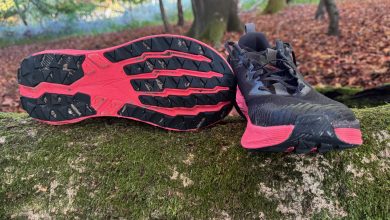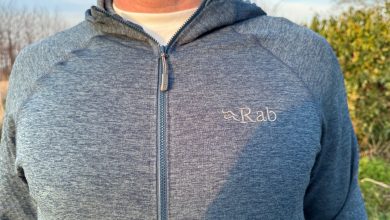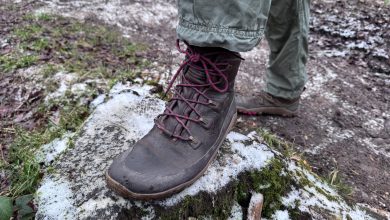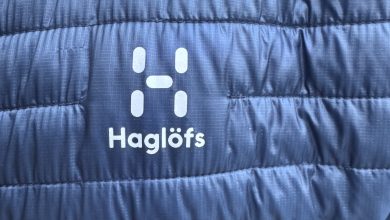Guest Post: Patagonia Nano Air Review
To understand what the Patagonia Nano Air represents, it’s important to understand the background and recent history of insulated clothing. To that end, here is a quick history lesson.
Eddie Bauer wasn’t the first human being to use down feathers to keep warm, but he was the first to patent the concept of a quilted down jacket, back in 1939 (read more here).
In the decades since Bauer’s first designs (which still look remarkably modern 70-odd years later), down insulation has come to completely dominate the market when it comes to surviving seriously cold temperatures.
Down was such a revelation because of its incredible warmth to weight ratio. It’s also remarkably breathable. The Achilles heel of down is its performance when wet. Whether it’s rain getting in from the outside, or sweat rising up from the inside, hikers and climbers find that when down becomes damp it clumps up, loses its fill power, and stops insulating. That’s a huge problem: a sleeping bag could be rendered nearly useless by a leaking water bottle, upturned canoe, or any number of outdoors disasters. It was here that wool managed to cling on as a useful insulator. It was heavier and not as insulating, but what insulation it did provided was barely dented by damp.
But for a couple of decades now, the market for technical mid-layers has consisted almost entirely of fleece and down. Wool still has a (growing) place as a base-layer, but few people setting out for a serious hike in the 21 st century would even consider a woolen pullover as an insulating mid-layer. Woolen bed-rolls are entirely a thing of the past, replaced by lightweight, down stuffed sleeping bags.
The advantages and aesthetics of wool in its many forms – cashmere, shearling, alpaca, merino – mean that it is unlikely to be deposed as king of non-technical mid-layers any time soon. After all, when you’re selecting your office cardigan, the weight, wicking ability and warmth retention properties while wet are unlikely to be significant factors. So what happened to drive it out of the hiking sphere?
In the ‘80s, the US Military pushed for the development of an insulator that would combine the warmth of down and the warmth-retention properties of wool in damp environments. The result of this request, after some years of research and development, was PrimaLoft. The first PrimaLoft products available to the public were jackets made by LL Bean, and they were revolutionary. Soon after, PrimaLoft made its way into sleeping bags and the rest of the outdoors marketplace. It would never be quite as warm as dry, high quality down, but its versatility was invaluable.
In the years since, these synthetic down insulators have developed enormously in quality and variety. Manufacturers have used them in a number of inventive ways, such as stuffing the areas of parkas likeliest to get wet – the shoulders and armpits, typically – with synthetics, whilst wrapping the torso in natural down, or creating mixes of natural and synthetic downs to try and get the best out of both materials. By themselves, these insulators make for fantastic jackets.
Patagonia’s Nano Puff jacket is an example of a highly, highly successful mid-layer insulated entirely with PrimaLoft. Light, packable and water resistant, jackets like this began to take over from heavy fleeces in the same way that fleeces had taken over from wool.
In 2016, PrimaLoft is still a primary player in the ‘synthetic down’ market – but some serious competitors have joined the fray. Polartec Alpha, Coreloft, and FullRange are three leading insulators that represent the best of what the market currently has to offer, and are used by almost all the high end manufacturers. In my opinion, the Patagonia NanoAir and the Arc’teryx Atom (which uses Coreloft) exemplify the products that are making the best use of these insulators, and as a result are at the forefront of outdoor technology today. Upon its release the NanoAir was hailed as revolutionary, drawing rave reviews and winning the Gear of the Year 2015 award from Outside Magazine.
Like many others, I bought one. A year later, here are my impressions.
First, I try not to dwell on my regrets, but I wish I had bought the hooded version. My thought process was that I really appreciate versatility, and that I really only want a hood on my hardshell. Otherwise, you get hoods bunching or squished under each other and getting messed up. I usually prefer to layer my head insulation separately, with a hat and face protection as necessary. In the case of the NanoAir though, it’s been in such constant use in so many situations, and is so cozy, that I have often wished I could pull the hood up and snuggle that bit deeper into it.
It really has become my go to layer – I envision getting a second version (hooded, this time) to serve as my hiking jacket while I keep my other for general winter about-town wear. I’ve now used it for skiing, hiking, traveling and general use. Like a down jacket, it has that feeling of instant warmth when you put it on – you can feel your body-heat being trapped right away. I think that’s where all the descriptions of its coziness come from, as well as the incredibly soft, smooth interior lining. On the other hand, that warmth isn’t oppressive. FullRange, the insulation used by Patagonia, is so revolutionary in large part because of its breathability. I am someone who runs very, very hot. Like, window-open- when-its- snowing hot. When I was skiing this past winter, the wind-chill on the slopes was several degrees below freezing. The NanoAir kept me warm on the ski-lifts but didn’t overheat me when I was (laboriously) making my way down the mountain. When I did sweat, the warmth of the jacket wasn’t remotely affected – and it dries in record time.
Although being able to be a bit reckless about keeping dry is a plus of the NanoAir, it has a very effective DWR coating on it. Brand new out of the shop, you can pour a cup of water over the jacket and it will just bead up and run off. Under persistent, heavy rain the shoulders will eventually get overloaded and start to get wet. Before I went skiing I refreshed the DWR treatment and it took very well. Snow didn’t stick and melt on me when I fell, and I fell a lot. It’s not a rain jacket though, and is not especially windproof, although I see that as a feature rather than a bug. Breathability has compromises, after all. Paired with a lightweight shell, however, for emergencies you would be fine in most non-extremes.
As a travel jacket, my hoodless version is exceptional. I have appreciated it many times now in warding off the artificial chill of airplanes. It can be squished down to ridiculous proportions without losing any of its shape or loft, and any crumples and creases quickly fall out. It dries, as I mentioned, absurdly quickly. Although it isn’t a ‘smart’ jacket, in black it is discreet enough for business class and nice restaurants. It’s also low profile enough to fit under a blazer or sports jacket if you need to stay warm but more formal.
One thing I’ve noticed is a large number of bike commuters wearing the NanoAir through the Boston winters. I haven’t used it on a bike myself, but it makes a lot of sense. Winter bike wear for commuters is perhaps the trickiest item of technical wear to get right – you have to produce something that’s warm enough to contend with wind chill, breathable enough that an office worker who might not have access to a shower is not going to sweat uncontrollably, and water resistant at least against light showers. I can’t vouch for it personally, but it looks as if a good number of cyclists have found the NanoAir ticks those boxes.
Looking at my own jacket now, it’s remarkable how well it’s stood up to a year of near constant wear and abuse. When you pick it up for the first time, it’s so light and soft that you assume a degree of fragility. I treated it with kid gloves for a couple of weeks, but quickly realized that it is a lot tougher than it looks. The zips haven’t snagged, and the front hand pockets aren’t stretched out. Although, like the whole Patagonia range, the NanoAir isn’t exactly cheap, I think it’s proved itself to be great value.
Over the last few years, down has made its own technological leap forward with the advent of hydrophobic down. It is getting more and more unusual to see top-end jackets and sleeping bags made without hydrophobic down, so great are the advantages. It really is a constant arms race in the world of technical gear. Where we will be in two or three years is an open question, but right now the NanoAir is a phenomenal buy.
Get the Patagonia Nano Air at Amazon.




